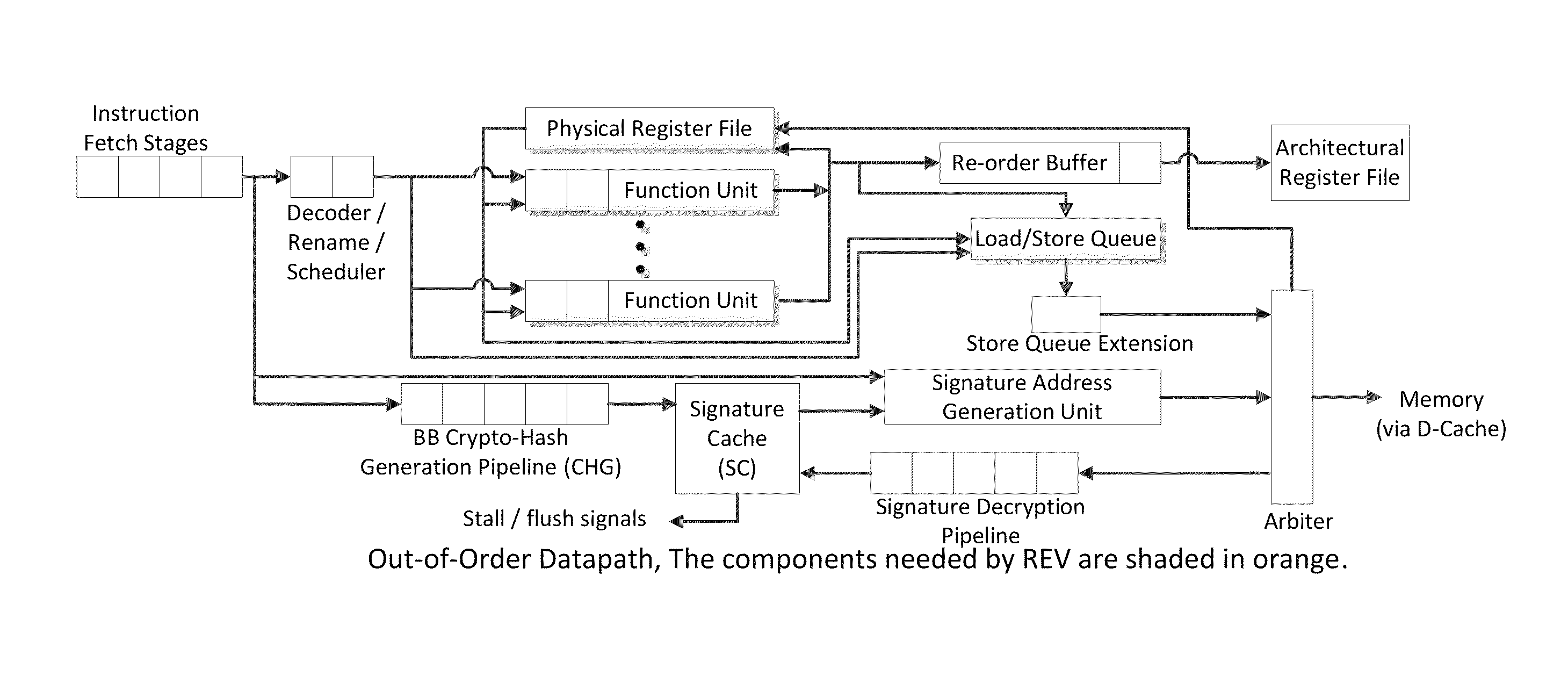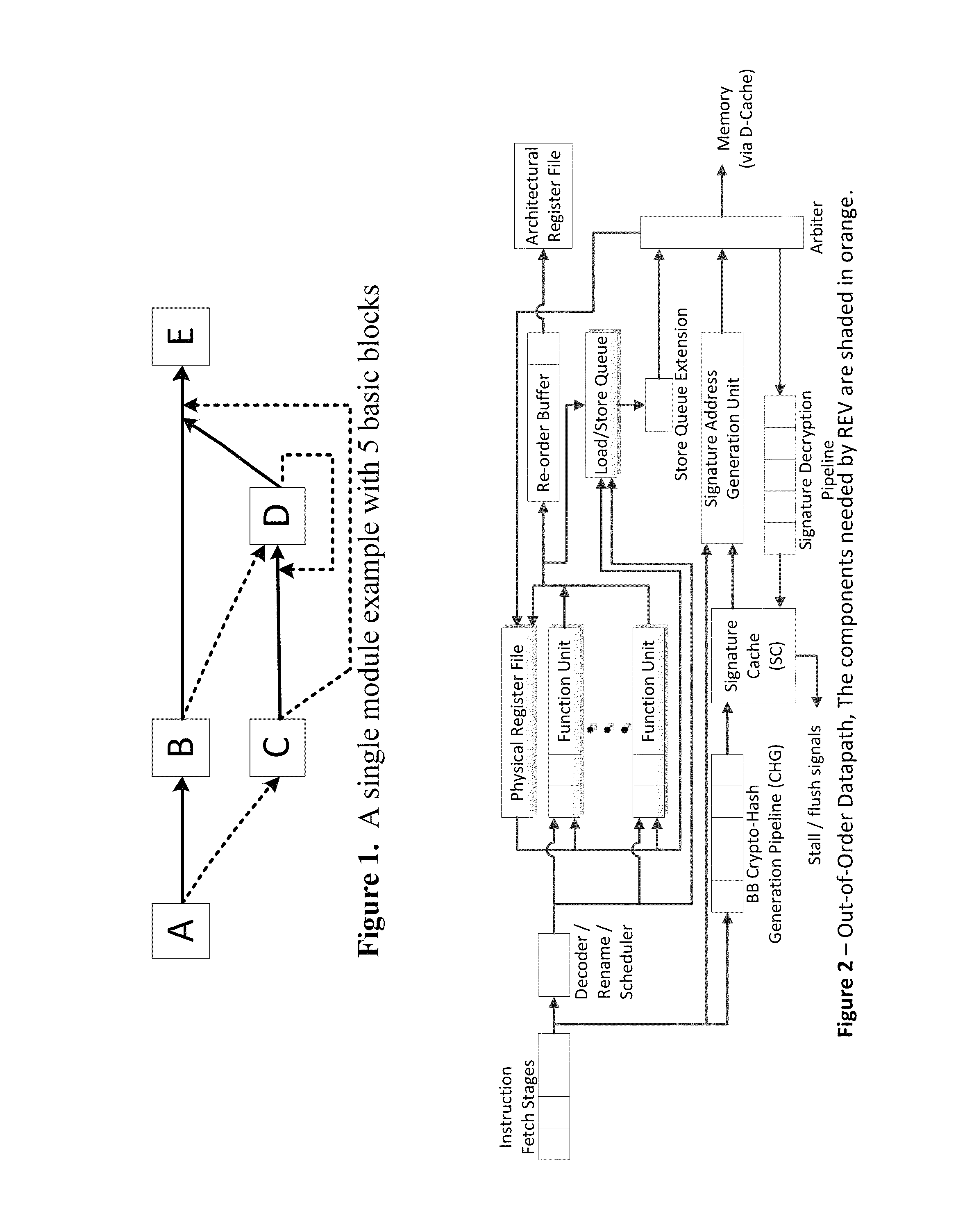Continuous run-time validation of program execution: a practical approach
a run-time validation and program technology, applied in the field of continuous run-time validation of program execution, can solve problems such as code vulnerable to run-time compromises and illegal linking of code to compromised library functions, and achieve the effect of easy retrofitting
- Summary
- Abstract
- Description
- Claims
- Application Information
AI Technical Summary
Benefits of technology
Problems solved by technology
Method used
Image
Examples
Embodiment Construction
4.1 REV: Validating Executions at Run-Time—Overview
[0175]The proposed technique for control flow authentication and the authentication of instructions executed along the control flow path is called REV: Run-time execution Validator. In REV, the signature of each basic block of committed instructions is validated as the control flow instruction (branch, jump, return, exit etc.) terminating the basic block is committed. In addition to comparing the cryptographic hash function of the instructions in the basic block against a reference signature, that control flowed into the basic block along an expected path is validated by comparing the actual address of the target of branch instruction at the end of the current basic block.
[0176]FIG. 1 depicts a simple example, with the basic blocks for a module labeled as A, B, C. D and E. A is the block executed on entry into the module (which has a single entry point) and E is the exit block. The directed edges show the control flow paths. At the ...
PUM
 Login to View More
Login to View More Abstract
Description
Claims
Application Information
 Login to View More
Login to View More - R&D
- Intellectual Property
- Life Sciences
- Materials
- Tech Scout
- Unparalleled Data Quality
- Higher Quality Content
- 60% Fewer Hallucinations
Browse by: Latest US Patents, China's latest patents, Technical Efficacy Thesaurus, Application Domain, Technology Topic, Popular Technical Reports.
© 2025 PatSnap. All rights reserved.Legal|Privacy policy|Modern Slavery Act Transparency Statement|Sitemap|About US| Contact US: help@patsnap.com


